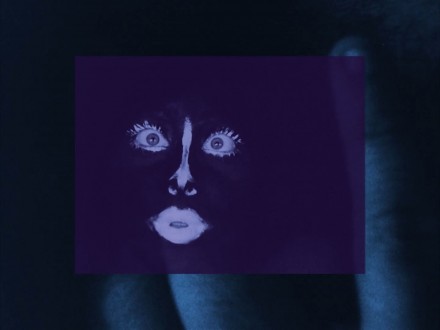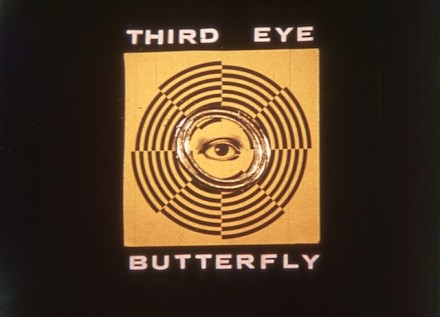Line Describing a Cone
About
"LINE DESCRIBING A CONE is what I term a solid light film. It deals with the projected light beam itself, rather than treating the light beam as a mere carrier of coded information, which is decoded when it strikes the flat surface (the screen). It is projected in the normal way, on a 16mm film projector. Though inevitably there will be a wall that limits the length of the beam, a screen is not necessary. The viewer watches the film, by standing with his, or her, back towards what would normally be the screen, and looking along the beam towards the projector itself. The film begins as a coherent line of light, like a laser beam, and develops through the 30 minute duration, into a complete, hollow cone of light. Line Describing a Cone deals with one of the irreducible, necessary conditions of film: projected light. It deals with this phenomenon directly, independent of any other consideration. It is the first film to exist solely in real, three-dimensional, space. This film exists only in the present: the moment of projection. It refers to nothing beyond this real time. (In contrast, most films allude to a past time). It contains no illusion. It is a primary experience, not secondary: i.e. the space is real, not referential; the time is real, not referential...
"Important conditions for the projection:
A. That the projector be inside the viewing space, i.e. it should not be inside a projection booth. As the focal point, and the source of light, it is an integral part of the film.
B. That the projection space be entirely empty of chairs or other furniture.
C. That the space be absolutely pitch-dark. Owing to the delicate nature of light, even a slight spillage of ambient light can seriously affect the film's visibility.
D. The vertical height of the frame, at the wall (which stops the beam), should be about 6 feet (1.75 to 2 metres). The base of the frame should be about 1 foot (30 centimeters) from the floor. The projector should stand at a height of about 3 feet (1 metre).
E. The light of the beam is visible through contact with particles in the air, be they from dust, humidity or cigarette smoke. Smoking should not be prohibited." -A.M., 5th International Experimental Film Competition Catalogue, 1973
"Just before [a screening of Line Describing a Cone at the Whitney Museum], and once during the screening, we thickened the air with a theatrical 'fog' machine. This was very effective. I've since found that a 'hazer' is even better." -A.M., 2001
Programs
-
See More
Projection Instructions
A program of 16mm films that involve special instructions to the projectionist, curator, or spectator
Join us for a modular program of 16mm films that involve special instructions to the projectionist, curator, or spectator, underscoring the performative dimensions of cinematic exhibition. Venues wishing to exhibit a version of the program are encouraged to curate individual combinations of films from the list below that reflect their own interests, equipment, and exhibition spaces.


